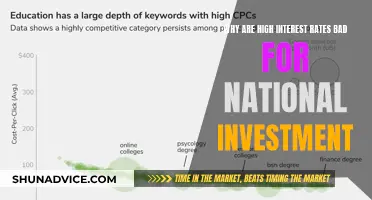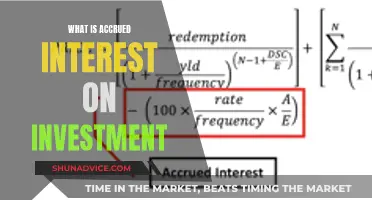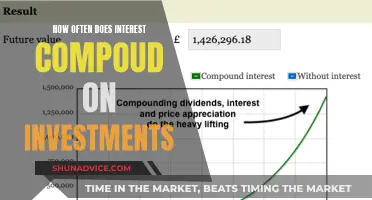
Conservative investing is an investment strategy that prioritises the preservation of capital over growth or market returns. Conservative investors are typically risk-averse and are willing to give up potentially high returns for more stable returns. They seek to protect their investment portfolio's value by investing in lower-risk securities such as blue-chip stocks, fixed-income securities, the money market, and cash or cash equivalents. This strategy is often chosen by investors with a short time horizon, meaning they will need to tap into their account sooner rather than later. Conservative investors are also known to seek out investment-related information to enhance their understanding of the investment landscape and make informed decisions.
| Characteristics | Values |
|---|---|
| Risk tolerance | Relatively low |
| Returns | Stable over high |
| Time horizon | Relatively short |
| Investment strategy | Prioritises preservation of capital over growth |
| Investment type | Lower-risk securities such as blue-chip stocks, fixed-income securities, the money market, and cash or cash equivalents |
| Portfolio diversification | Crucial |
What You'll Learn

Conservative investors are typically risk-averse
Conservative investors tend to invest in lower-risk securities such as blue-chip stocks, fixed-income securities, the money market, and cash or cash equivalents. More than half of their portfolio will be held in debt securities and cash equivalents rather than equities or other risky assets. They prioritise preserving the purchasing power of their capital with the least amount of risk. Conservative investment strategies will typically include a relatively high weighting to low-risk securities such as Treasuries and other high-quality bonds, money markets, and cash equivalents.
Conservative investors also acknowledge that some of their conservative investments may not perform as expected, given the unpredictability of the future. In that regard, portfolio diversification plays a crucial role in conservative investing. Sometimes, investors who are otherwise more aggressive will temporarily adopt a conservative strategy if they feel that the markets will take a negative turn. This could be due to overheating asset prices or indicators of an economic recession on the horizon. In such instances, this shift to safer assets is called a defensive strategy, designed to deliver protection first and modest growth second.
Interest Rates: Impacting Investment Strategies and Returns
You may want to see also

Conservative investing prioritises capital preservation
Conservative investors are persistent in seeking investment-related information to enhance their understanding of the investment landscape and make informed decisions. They acknowledge that investment professionals have more expertise in investing due to their extensive experience in the field.
Conservative investing seeks to protect an investment portfolio's value by investing in lower-risk securities such as blue-chip stocks, fixed-income securities, the money market, and cash or cash equivalents. More than half of a portfolio will generally be held in debt securities and cash equivalents rather than equities or other risky assets.
Conservative investment strategies will typically include a relatively high weighting of low-risk securities such as treasuries and other high-quality bonds, money markets, and cash equivalents. Sometimes, investors who are otherwise more aggressive will temporarily adopt a conservative strategy if they feel that the markets will take a negative turn. This could be due to overheating asset prices or indicators of an economic recession on the horizon. In such instances, this shift to safer assets is called a defensive strategy, designed to deliver protection first and modest growth second.
Understanding Schedule A: Investment Interest Explained
You may want to see also

Conservative investors seek to diversify their portfolios
Conservative investors often seek to enhance their understanding of the investment landscape and make informed decisions by gathering investment-related information. They acknowledge the expertise of investment professionals and may seek their guidance.
A key characteristic of conservative investing is the focus on lower-risk securities. More than half of a conservative investor's portfolio is typically held in debt securities, cash, and cash equivalents rather than equities or other risky assets. This includes investments in blue-chip stocks, fixed-income securities, the money market, and high-quality bonds.
Conservative investors also consider the time horizon of their investments. A shorter time horizon indicates that an investor intends to access their funds sooner rather than later. As a result, they may choose a more conservative portfolio to ensure the preservation of their capital.
Additionally, conservative investors acknowledge that some of their investments may not perform as expected due to the unpredictable nature of the market. Therefore, they adopt a defensive strategy by diversifying their portfolios to balance potential losses and protect their overall investment value. This diversification plays a crucial role in conservative investing, helping investors achieve their financial goals while managing risks effectively.
Dollar Interest Rate Changes: Impact on Your Investments
You may want to see also

Conservative investing strategies are defensive
Conservative investors tend to have a low-risk tolerance and are persistent in seeking investment-related information. They acknowledge that investment professionals have more expertise in investing due to their extensive experience in the field. Conservative investors are also more likely to abide by the fundamental principle that if an investment seems too good to be true, it most likely is.
Conservative investing strategies seek to protect an investment portfolio's value by investing in lower-risk securities such as blue-chip stocks, fixed-income securities, the money market, and cash or cash equivalents. More than half of a conservative investor's portfolio will generally be held in debt securities and cash equivalents rather than equities or other risky assets.
Conservative investment strategies will typically include a relatively high weighting of low-risk securities such as Treasuries and other high-quality bonds, money markets, and cash equivalents. Conservative investors may also choose to invest in established entities that pay consistently without the risk of default or missing a dividend payment deadline, such as large-cap or blue-chip equities.
Conservative investing can be contrasted with aggressive investing. Aggressive investors typically prioritise growth or market returns over the preservation of capital. However, sometimes investors who are otherwise more aggressive will temporarily adopt a conservative strategy if they feel that the markets will take a negative turn. This could be due to overheating asset prices or indicators of an economic recession on the horizon. In such instances, this shift to safer assets is called a defensive strategy.
Smart Investment Strategies in a Changing Interest Rate Environment
You may want to see also

Conservative investors seek to make informed decisions
Conservative investors typically abide by the principle that if an investment seems too good to be true, it most likely is. They understand that some of their investments may not perform as expected due to the unpredictability of the future, and therefore, portfolio diversification plays a crucial role in their strategy. Conservative investing seeks to protect an investment portfolio's value by investing in lower-risk securities such as blue-chip stocks, fixed-income securities, the money market, and cash or cash equivalents.
A conservative investment strategy will generally hold more than half of a portfolio in debt securities and cash equivalents rather than equities or other risky assets. This strategy prioritises preserving the purchasing power of one's capital with the least amount of risk. Conservative investment strategies will typically include a relatively high weighting of low-risk securities such as Treasuries and other high-quality bonds, money markets, and cash equivalents.
Conservative investors may choose this strategy if they feel that the markets will take a negative turn due to overheating asset prices or indicators of an economic recession. In such cases, this shift to safer assets is called a defensive strategy, designed to deliver protection first and modest growth second. After the market has adjusted, they may adopt a more aggressive strategy.
Better Investing: Interest Earnings and Frequency
You may want to see also
Frequently asked questions
A conservative investment is a strategy that prioritises the preservation of capital over growth or market returns. Conservative investors are willing to give up potentially high returns for more stable returns, and they understand that they are unlikely to experience dips that could make them queasy.
People are interested in conservative investments because they want to protect their current funds and avoid risk. Conservative investments are also attractive to those with a short time horizon, meaning they need to access their money soon.
Conservative investors are persistent in seeking investment-related information to make informed decisions. They acknowledge that investment professionals have more expertise in investing due to their extensive experience in the field. They also abide by the principle that if an investment seems too good to be true, it most likely is.
Conservative investment strategies include a relatively high weighting of low-risk securities such as treasuries and other high-quality bonds, money markets, and cash equivalents. Sometimes, investors who are otherwise more aggressive will temporarily adopt a conservative strategy if they feel that the markets will take a negative turn.







